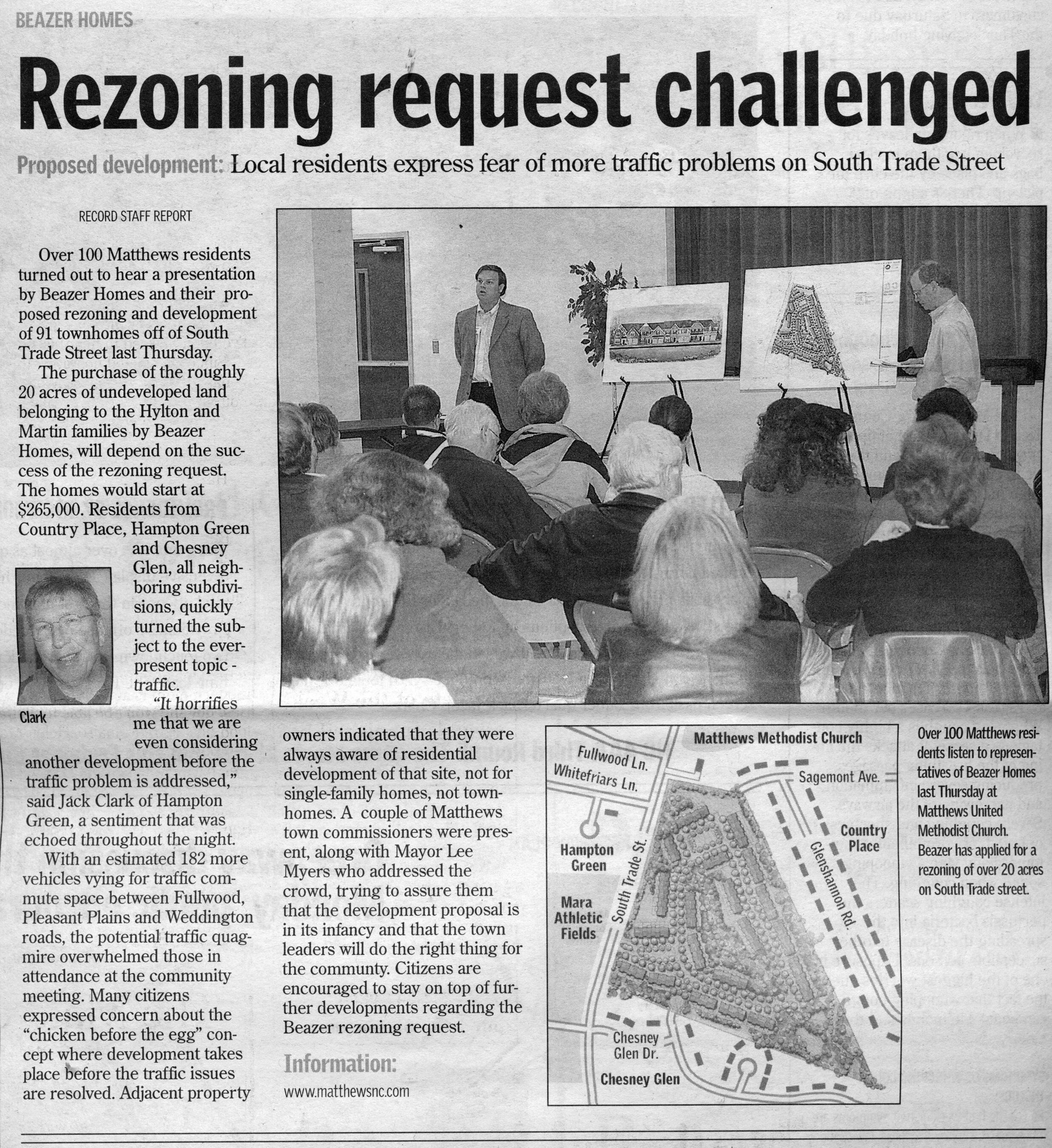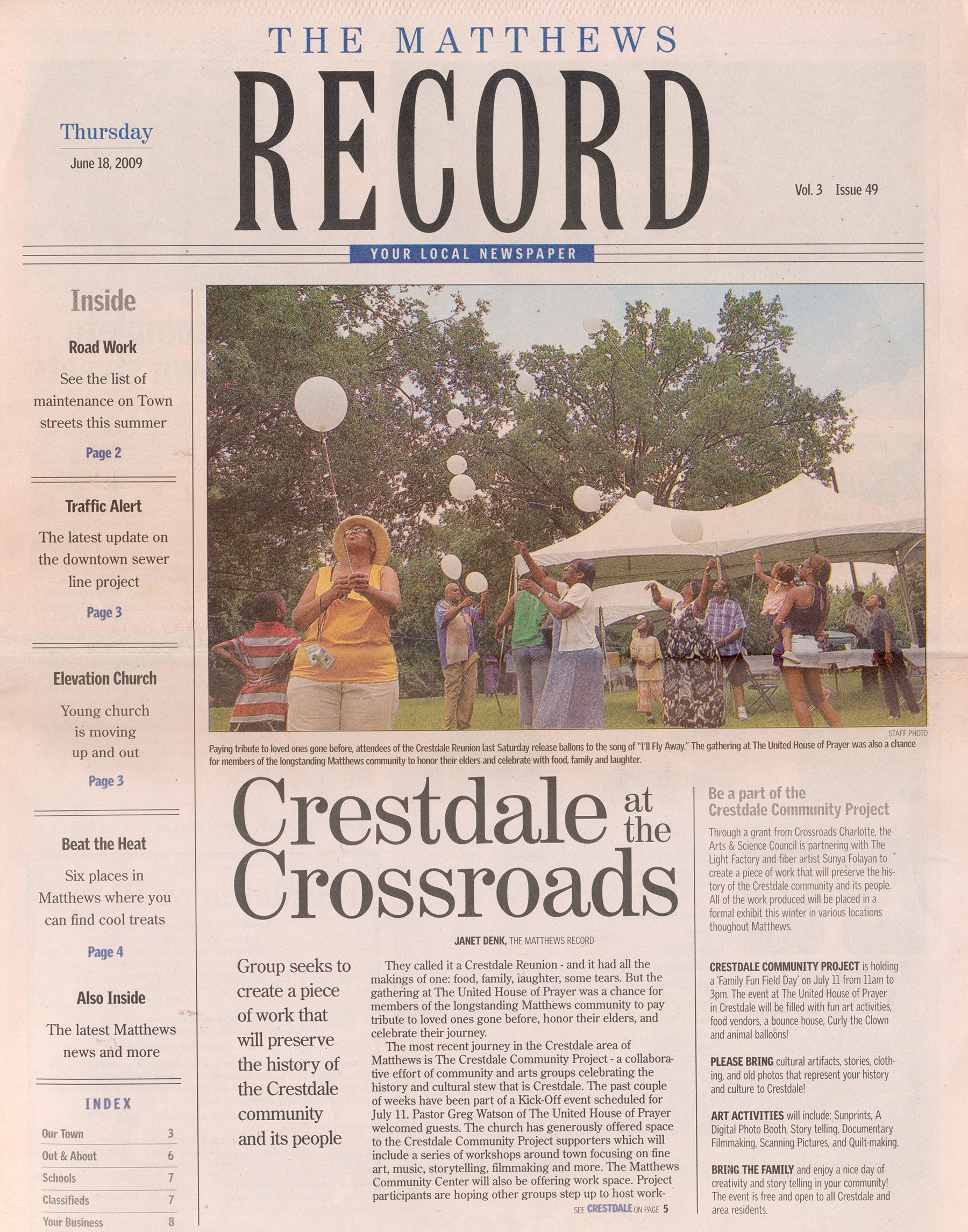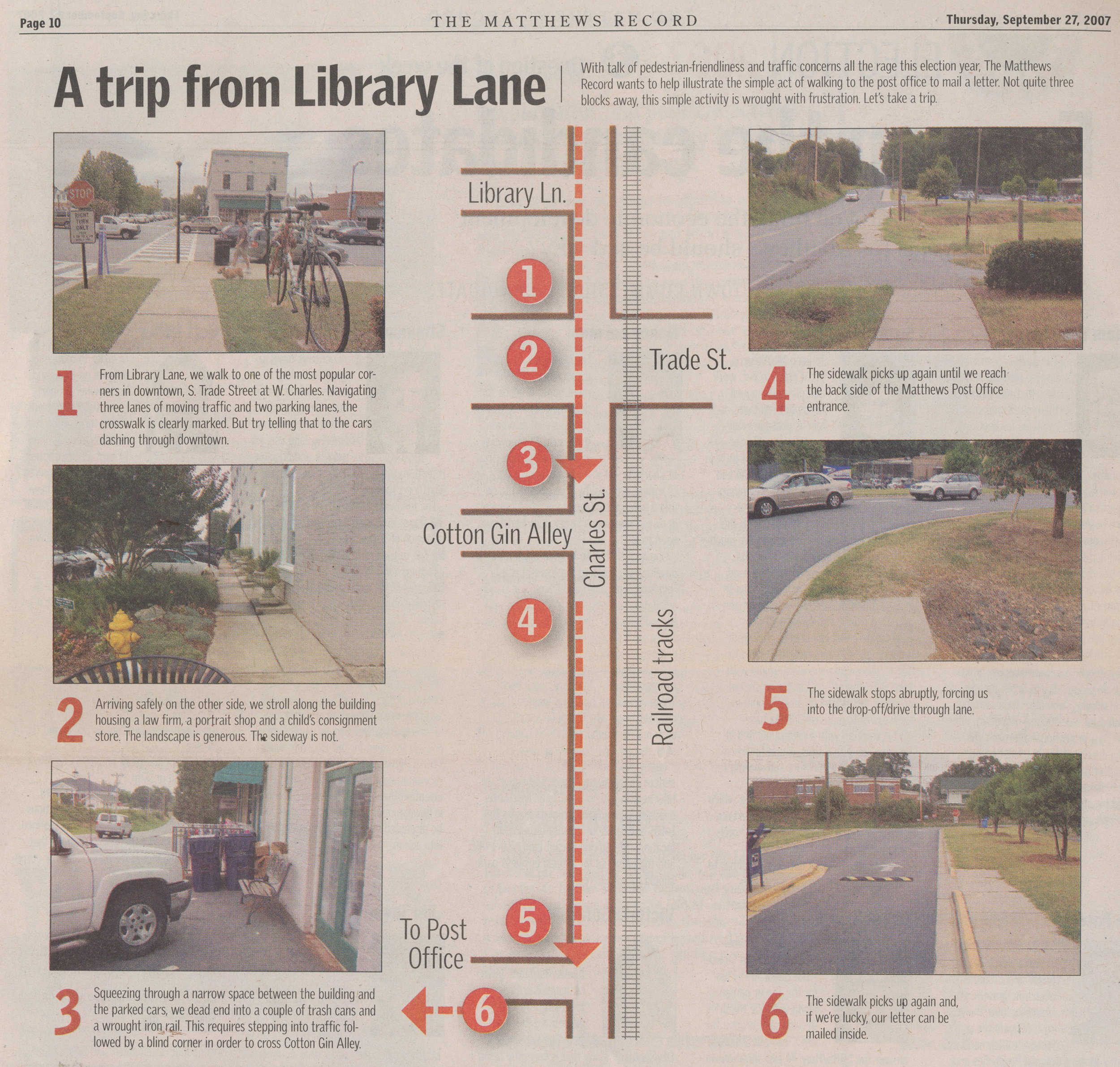With permission, The Beacon is archiving past issues of Matthews News and Record (also called Matthews News and Record) articles online. Throwback Thursday articles will include relevant content still facing Matthews today. This story was originally published February 23, 2006.
With the land being cleared for apartments at 10252 Monroe Road, this article explains the significance of the cemetery on the rear portion of the property.
Old Cemetery Tells Stories of Matthews’ African American Community
By Janet Denk
The unmarked Roseland Cemetery gets only a handful of visitors these days. Tucked back in the woods off Monroe Road on private property belonging to the Renfrow family of Matthews, the African American cemetery has all but disappeared beneath pine trees and rambling vines.
Periwinkle crawls across a few marked headstones. Other graves are marked by large stones the rudimentary markers used by people at the time. Depressions in the undulating landscape indicate rows and roes of sunken graves.
The cemetery served as the primary burial ground for members of Tank Town’s Roseville AME Zion church, which had an active congregation until 1928. The church, located on Ames Road near the railroad tracks, was abandoned and eventually collapsed.
Residents were share croppers or day laborers in Matthews. Many farmed or worked on the railroad. Tank Town was the original African American community neighboring Matthews, named because it was the site of the water tank used to supply steam engine trains.
Known today as Crestdale, annexted in 1998, the area is developing rapidly. The rise of housing developments and the natural outgrowth of I-485 will directly impact the area.
The Roseland (Roseville) Cemetery is an important part of Matthews history.
“One of my twins is buried over there. My mother and grandmother, too,” says longtime Crestdale resident Viola Boyd.
Like many African American cemeteries throughout the state, Roseland is rich with the history. Many descendants of people in these resting places have moved or died or were unable to maintain them. The location of many cemeteries like Roseland is difficult to find - giving the impression of being abandoned and uncared for. Back when the area was mostly rural, traveling to the gravesites after the original burial meant traveling long distances by surreys, mule carts, and ox carts.
Residents in the surrounding subdivisions are aware of the old cemetery. Many recall an elderly gentleman who, year after year, came on Mother’s Day to lay flowers on a grave. The say he doesn’t come anymore.
A storehouse of African American history and cultural identity lies beneath that soil.
Mrs. Boyd, speaking with local historian Paula Lester, is one of the surviving links to Crestdale’s past. Born just after the turn of the century, Mrs. Boyd and other elderly folks like her are treasured resources. Her son and caretaker, Harvey Boyd, is a tireless proponent of historical understanding.
They are not alone in their desire to see Roseland Cemetery preserved.
Local citizens - black and white, native and newcomer - are committed to taking care of this historically important part of Matthews. The 50-plus acres of land where the cemetery sits has been eyed by developers for single family homes, but the zoning restrictions have kept them away. The land is still up for zoning.
Whoever develops the land, by state law, will be responsible for moving the graves or putting a fence around the cemetery. The development of that property could be years from now. But many feel that the gravesites occupying a small area within that property should be addressed much sooner.
Interested citizens would like to see the cemetery portion of the land deeded to the Matthews Historical Foundation, in order to secure funding for upkeep. Paula Lester and Harvey Boyd are currently working on the development of a committee which can devote more time to the cemetery.
“People have to understand their past, in order to appreciate what they’ve got now,” Boyd says.
If you are interested in being a part of this effort, please contact Harvey Boyd at 704-847-4983 or Paula Lester at 704-847-7610.


























